The phenomenon of rock stars achieving immense commercial success after their deaths is a strange, tragic, and yet powerful trend across many musical genres. This article examines how artists, specifically musicians and painters who have died, often marks the beginning of their most financially successful period. The morbid fascination with the death of musicians, coupled with the nostalgia and mystique that surrounds their legacy, leads to a surge in album sales, streaming numbers, and even commercial opportunities. While their deaths may be a devastating loss for their fans, family, and the music world, the financial windfall that follows often proves to be the most profitable career move an artist can make.
The Death of Musicians: Kerching!
From rock to hip-hop, country to pop, the posthumous success of these musicians reflects a troubling but consistent pattern: death creates a myth around an artist that generates both cultural reverence and significant revenue. In exploring this, we look at case studies from various genres, highlighting how death has reshaped and often amplified the legacies of these musicians, including Elvis Presley and Jim Morrison.
The ‘27 Club’ and Rock’s Mythic Immortals
The “27 Club” is perhaps the most famous phenomenon in rock, symbolising the untimely death of some of the genre’s most iconic figures at the age of 27. While many of these musicians achieved significant success during their lifetimes, their deaths transformed them into legends, and their estates have benefited from that mythologisation.
Jim Morrison: The Lizard King’s Eternal Legacy
Jim Morrison, the enigmatic frontman of The Doors, died in 1971 at the age of 27 under mysterious circumstances in Paris. Morrison’s death cemented his place in rock history as the quintessential tortured artist—mystical, rebellious, and unpredictable. His persona as the “Lizard King,” combined with his haunting baritone voice, made him a symbol of 1960s counterculture.
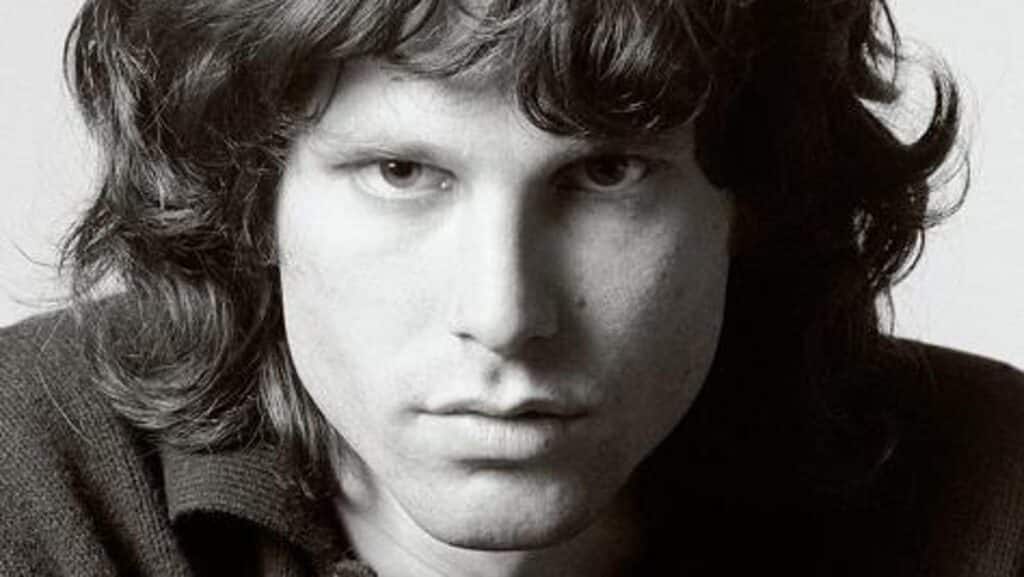
Morrison’s death instantly propelled The Doors’ catalogue into the realm of immortality. In the immediate aftermath, albums like L.A. Woman and Morrison Hotel saw a massive resurgence in sales. The band’s label, Elektra Records, capitalised on his death by re-releasing older albums and compiling greatest hits collections, which continued to sell well for years after. The Doors’ music and Morrison’s image have remained commercially viable for decades, with their songs appearing in films, advertisements, and even video games.
Since Morrison’s death, The Doors have continued to sell millions of records, and his estate has generated substantial income through music royalties and licensing deals. In 1991, the Oliver Stone biopic The Doors introduced Morrison to a new generation of fans, resulting in another spike in sales. To this day, Morrison’s face is emblazoned on countless posters, T-shirts, and other merchandise, making him one of the most enduring icons in rock history. His estate continues to earn millions annually, with his likeness and music generating revenue across multiple platforms.
Elvis Presley: The King’s Reign After Death
Elvis Presley, the “King of Rock ‘n’ Roll,” is perhaps the most iconic figure in the history of popular music, and his death in 1977 only solidified his legendary status. Presley died at the age of 42 from heart failure, exacerbated by prescription drug abuse, but his death marked the start of an even more lucrative phase in his career. Elvis was already a global superstar, but the posthumous marketing of his music, image, and legacy transformed him into an economic juggernaut.

Within weeks of his death, Elvis’s albums and singles dominated the charts as fans rushed to purchase his records. According to Billboard, Elvis’s catalogue sold more than 10 million records in the first year after his passing. Over time, his estate capitalised on his vast catalogue, reissuing albums, releasing box sets, and licensing his music for films, television, and commercials. The famous 1968 “Comeback Special” and his live performances in Las Vegas became focal points of posthumous releases.
Graceland, Elvis’s mansion in Memphis, Tennessee, became a shrine for fans, drawing millions of visitors and generating substantial revenue for his estate. In 1982, it was opened to the public as a museum, becoming one of the most visited homes in the United States. The estate has since expanded its ventures, offering everything from virtual tours to Elvis-themed merchandise, events, and music festivals. According to Forbes, Elvis is consistently one of the highest-earning deceased celebrities, with his estate earning between $30 million and $40 million annually in recent years.
Elvis’s music, films, and even his image remain highly marketable. His likeness has been used in countless commercials, TV shows, and even hologram performances. With new generations discovering his music, Presley’s estate continues to reap the benefits of his unparalleled posthumous popularity.
Michael Jackson: The King of Pop’s Financial Resurrection
While Elvis’s posthumous success laid the groundwork for how an artist’s legacy can be monetised, Michael Jackson’s death in 2009 took posthumous profitability to a whole new level. Jackson’s death at the age of 50 was a media event that led to an outpouring of grief and nostalgia from fans worldwide. In the months following his death, Jackson’s music sales skyrocketed. His greatest hits compilation, Number Ones, topped charts globally, and his albums—particularly Thriller, Bad, and Off the Wall—experienced massive spikes in sales.
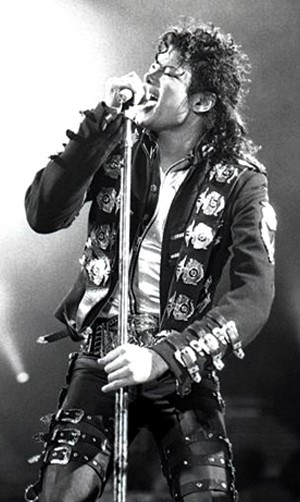
Jackson’s estate has been exceptionally active in maintaining and expanding his legacy. In 2009, the documentary This Is It, which chronicled Jackson’s rehearsals for his planned comeback tour, grossed over $250 million at the box office. Jackson’s music has continued to sell in high volumes, and the estate has released several posthumous albums, including Michael (2010) and Xscape (2014).
The financial success of Jackson’s estate is staggering. According to Forbes, between 2009 and 2019, Jackson’s estate generated over $2.4 billion, largely through music sales, licensing, and the continued use of his image in various forms of media. Cirque du Soleil’s Michael Jackson: One show in Las Vegas and the licensing of his likeness for various products and projects have further contributed to the King of Pop’s ongoing financial dominance.
Kurt Cobain: Grunge Icon, Corporate Goldmine

Kurt Cobain, the tortured frontman of Nirvana, died by suicide in 1994 at the age of 27, solidifying his place in the 27 Club. Cobain’s death came just as Nirvana had become the voice of Generation X, with Nevermind transforming grunge from an underground movement to a global sensation. In the years following his death, Nirvana’s albums saw a dramatic increase in sales, with Nevermind and In Utero re-entering the charts.
Cobain’s legacy has proven to be a goldmine for his estate. His widow, Courtney Love, managed his estate until their daughter, Frances Bean Cobain, inherited it. In 2020, Cobain’s estate earned an estimated $6 million. Furthermore, Cobain’s image and likeness continue to generate revenue through licensing deals, merchandise, and the release of unreleased demos and live performances. His legacy remains intertwined with both the anti-commercial ethos of the grunge movement and the capitalist mechanisms that fuel the music industry.
Pop’s Tragic Divas: Whitney Houston and Amy Winehouse
While the deaths of male rock stars have often been mythologised and commercialised, female pop stars like Whitney Houston and Amy Winehouse have also experienced a surge in popularity and profitability following their tragic deaths.

Whitney Houston, whose death in 2012 shocked the music world, saw an immediate spike in sales and streams of her iconic music. Songs like “I Will Always Love You” and “Greatest Love of All” re-entered the charts as fans celebrated her life and music. Houston’s estate has since leveraged her music and image through documentaries, biopics, and posthumous releases, generating millions in revenue. A hologram tour, which began in 2020, drew both praise and criticism but nonetheless demonstrated the enduring commercial appeal of her legacy.
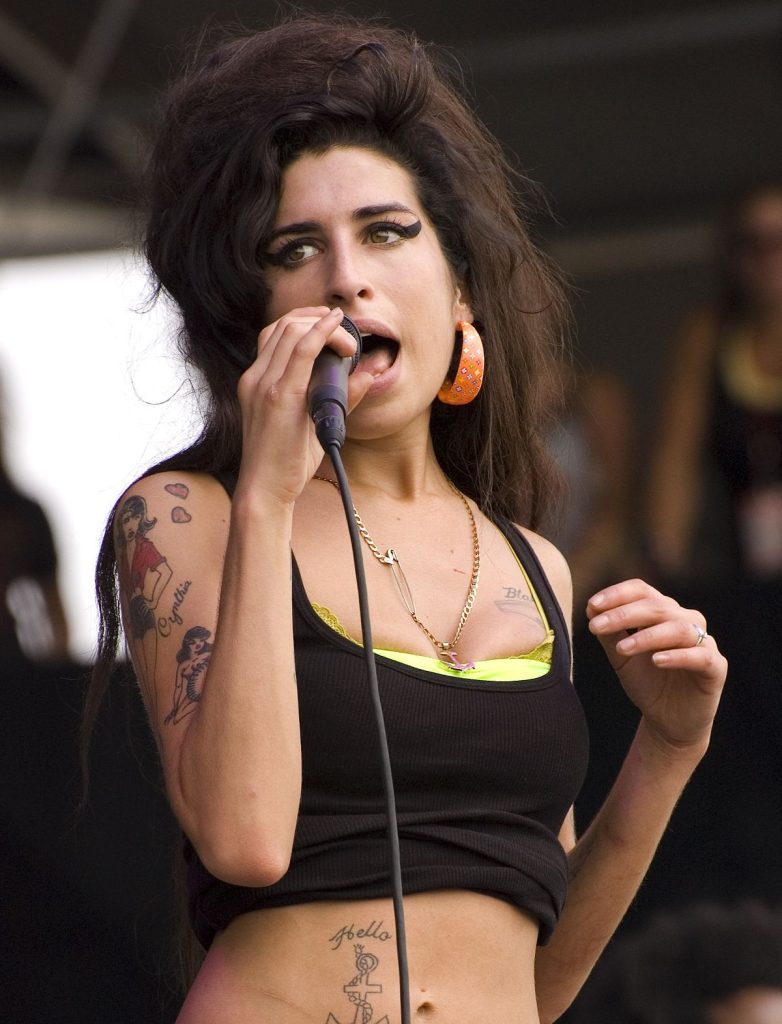
Similarly, Amy Winehouse, who died at the age of 27 in 2011, saw her second album, Back to Black, skyrocket in sales in the weeks following her death. Winehouse’s posthumous success was fuelled by the tragic allure of her life—her battles with addiction and the raw, emotional power of her music. The 2015 documentary Amy won an Academy Award and reintroduced her to a new audience, further boosting sales of her music.
Tupac Shakur and The Notorious B.I.G.: Hip-Hop Legends, Posthumous Icons
The phenomenon of posthumous profitability extends beyond rock and pop into hip-hop, where the untimely deaths of Tupac Shakur and The Notorious B.I.G. have similarly led to financial windfalls for their estates.
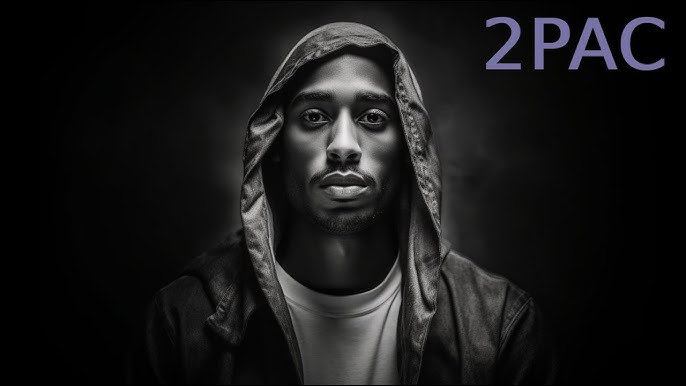
Tupac Shakur, who was murdered in 1996 at the age of 25, became one of the most commercially successful posthumous artists in history. His estate has released numerous albums, including The Don Killuminati: The 7 Day Theory and Better Dayz, both of which achieved significant sales. Shakur’s music, combined with his political activism and larger-than-life persona, ensured that his legacy would continue to generate millions. In 2020, Forbes reported that Tupac’s estate earned $3.5 million, making him one of the highest-earning deceased musicians in hip-hop.
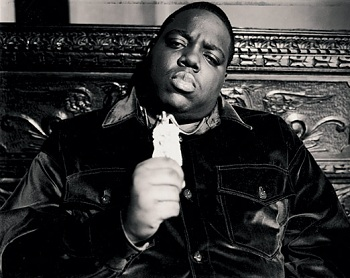
Similarly, The Notorious B.I.G., who was killed just months after Tupac in 1997, became a posthumous icon. His album Life After Death, released shortly after his murder, became one of the best-selling hip-hop albums of all time. Biggie’s estate has since released posthumous albums, licensed his image, and even created a documentary, Biggie: I Got a Story to Tell (2021), all of which have contributed to his ongoing financial success.
Johnny Cash: Country’s Man in Black Becomes a Cultural Giant

Even in country music, the death of Johnny Cash in 2003 spurred a surge in interest in his music. Already a towering figure in American music, Cash’s final albums, particularly American IV: The Man Comes Around, released shortly before his death, captured the raw emotion of a man facing his mortality. His haunting cover of Nine Inch Nails’ “Hurt” became iconic, and Cash’s posthumous releases have since earned him critical and commercial success.
Cash’s estate has continued to release previously unheard recordings and reissues, while his image remains a powerful symbol of rebellion, faith, and redemption. The estate has successfully marketed Cash’s legacy through books, documentaries, and a biopic (Walk the Line), all contributing to his enduring commercial appeal.
The Price of Immortality: How Artists Become Worth More in Death
The art world is a strange paradox. Artists who once struggled to make ends meet in life often find their works fetching millions after their death. It’s a phenomenon seen across centuries and cultures, with some of the most celebrated names in art history having died in poverty or obscurity, only for their works to become highly sought after posthumously. From Vincent van Gogh to contemporary artists like Jean-Michel Basquiat, death has proven to be the ultimate career move for many painters, sculptors, and creatives.
This article explores the economic transformation that occurs when an artist dies, why their work suddenly becomes so valuable, and how the commodification of their posthumous legacy has shaped the art market. We will examine key examples of artists whose works skyrocketed in value after their passing, while drawing on sources and insights from art historians, critics, and economists.
The Starving Artist: Vincent van Gogh’s Tragic Story
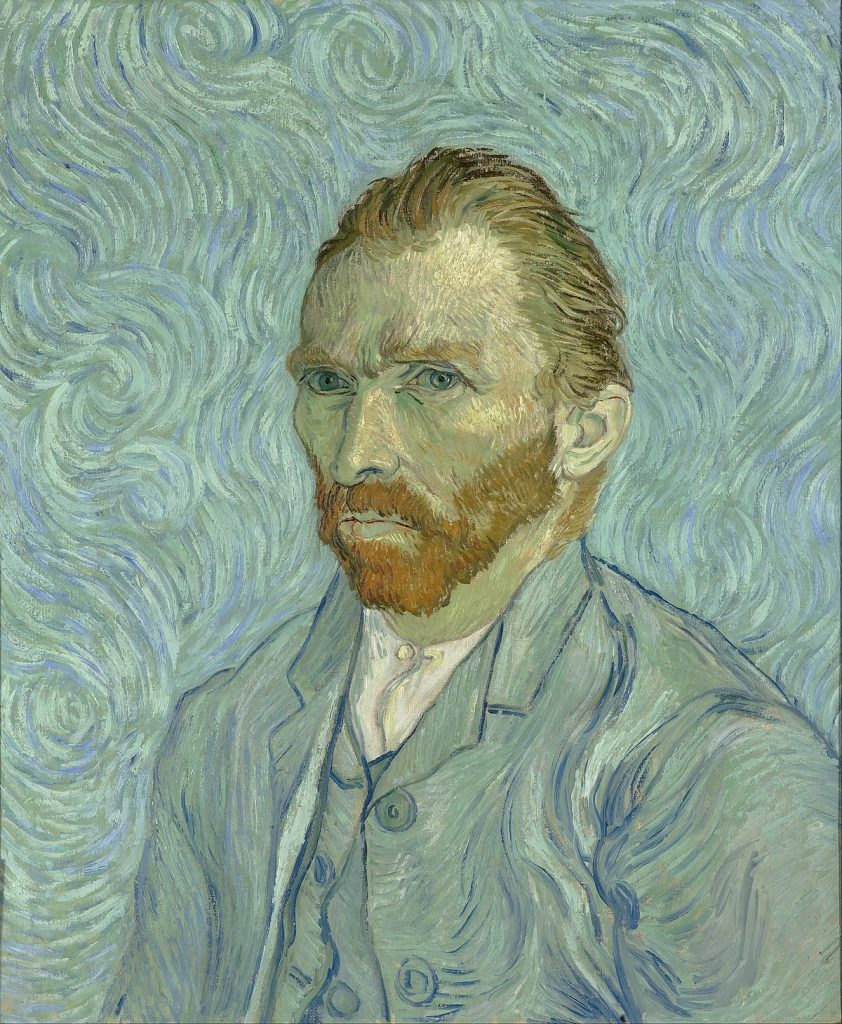
One of the most famous cases of an artist’s work appreciating dramatically after their death is that of Vincent van Gogh. Van Gogh’s name is synonymous with the “starving artist” archetype, yet today he is one of the most celebrated figures in Western art, his paintings selling for tens of millions of pounds. His story encapsulates the cruel irony of artistic fame: van Gogh sold only one painting in his lifetime, “The Red Vineyard” (1888), and died impoverished and mentally ill at the age of 37.
Van Gogh’s posthumous fame is largely the result of his brother Theo and his widow, Johanna van Gogh-Bonger, who preserved his work and letters. Over time, his paintings, marked by bold colours and emotional intensity, gained recognition. As public interest in van Gogh grew in the early 20th century, so did the market value of his works. In 1990, “Portrait of Dr Gachet” (1890) sold for a staggering $82.5 million at auction, making it one of the most expensive paintings ever sold at the time.
Art historian Martin Gayford notes: “Van Gogh is a tragic figure whose life story fuels the myth of the artist as a misunderstood genius. The fact that he only gained recognition after his death adds to the allure and, paradoxically, increases the financial value of his work.” The scarcity of his output, combined with his tragic personal history, has driven up demand for his paintings, turning them into prized commodities in the art market.
The Role of Death in Increasing Value
The phenomenon of an artist’s work becoming more valuable after death is driven by several key factors, including scarcity, the finality of their oeuvre, and the creation of myth. Death freezes an artist’s output; no more works can be produced, creating a finite number of pieces. This scarcity naturally increases demand. In the words of the French philosopher Jean Baudrillard: “The scarcity of an object defines its value, and there is no greater scarcity than that brought by death.”
Additionally, an artist’s death often leads to a re-evaluation of their work. Historical and critical distance allows collectors, galleries, and institutions to appreciate the significance of the artist’s contributions to their field, often resulting in a surge of interest. This re-evaluation process is sometimes spurred by retrospective exhibitions and scholarly work that highlight the importance of their creations. Moreover, the artist’s biography becomes central to how their work is perceived, turning their life story into part of the artistic value.
A striking example is that of Italian painter Amedeo Modigliani. Modigliani lived a turbulent life of addiction and illness, dying at the age of 35 in 1920. During his life, he was little more than a curiosity in the art world, known for his elongated figures and portraits. However, since his death, his paintings have become highly prized by collectors, with “Nu couché” (1917) selling for $170.4 million in 2015, placing Modigliani among the highest-selling artists of all time. Modigliani’s tragic life, his romanticised image as a bohemian outsider, and the sensuality of his works have all contributed to the posthumous explosion in value.
The Commodification of Tragedy
In many cases, an artist’s early death becomes a key component of their posthumous success. The concept of the “tragic artist” has been romanticised throughout history, from Renaissance masters to modern street artists. These figures are often seen as martyrs to their craft, whose work was ahead of its time and therefore underappreciated by their contemporaries. This narrative creates a powerful mystique that makes their art more desirable to collectors and institutions.
One modern example is Jean-Michel Basquiat, the New York-based artist who rose to fame in the 1980s. Basquiat’s raw, graffiti-inspired work captured the cultural and social tensions of his time, blending African-American history, hip-hop culture, and contemporary art. He died of a heroin overdose in 1988 at the age of 27, further embedding him in the lore of the “tragic artist.” In the decades following his death, Basquiat’s works have commanded ever-increasing prices. In 2017, his painting Untitled (1982) sold for $110.5 million at auction, making him one of the most expensive American artists ever.
Art critic Jerry Saltz describes the allure of Basquiat: “His work pulsates with life and tragedy. The fact that he died young only adds to the poignancy. Every painting feels like a piece of a lost future.” Basquiat’s image and work have been heavily commodified in the years since his death, from exhibitions and books to collaborations with brands like Supreme and Louis Vuitton. His untimely death made him a cultural icon, and that status has only amplified the financial value of his art.
Frida Kahlo: A Legacy Reborn in Death
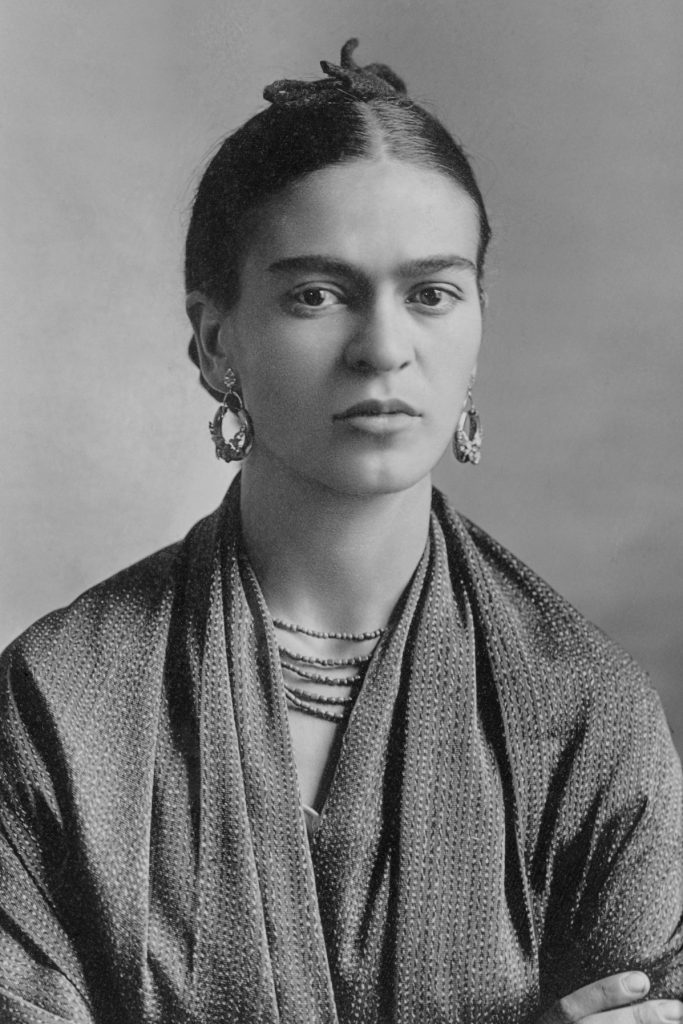
Frida Kahlo is another artist whose death contributed to the exponential rise in the value of her work. Though celebrated in her native Mexico, Kahlo’s international recognition was limited during her lifetime. She died in 1954, aged 47, with little financial success from her art. However, in the decades following her death, Kahlo’s reputation has grown enormously. Her deeply personal paintings, which explore themes of identity, pain, and feminism, have resonated with new generations of viewers.
Kahlo’s self-portraits, in particular, have become iconic, and her life—marked by illness, trauma, and her tumultuous relationship with fellow artist Diego Rivera—has been the subject of numerous films, books, and exhibitions. As interest in Kahlo has grown, so too has the value of her work. In 2016, her painting “Two Nudes in a Forest” (1939) sold for $8 million at auction, setting a record for a Latin American artist.
Kahlo’s image has also been commercialised in ways that extend far beyond her paintings. From fashion collaborations to merchandise bearing her likeness, Kahlo’s legacy has become a global brand. While some have criticised the commercialisation of her image, her estate continues to benefit from the enduring fascination with her life and work.
The Contemporary Art Market: A Ruthless Business
In the modern art world, the death of an artist can often be seen as a strategic moment for galleries and collectors. When British artist Francis Bacon died in 1992, his death triggered a surge of interest in his intense, often grotesque works. Bacon’s paintings, which explore themes of violence, sexuality, and mortality, had always been in demand, but his death cemented his place as one of the 20th century’s most important artists. In 2013, his triptych “Three Studies of Lucian Freud” (1969) sold for $142.4 million, a record at the time for a British artist.
Bacon’s estate has carefully managed the posthumous marketing of his works, ensuring that his paintings remain highly visible in museums and galleries around the world. The scarcity of Bacon’s works, combined with their emotional intensity, has only added to their appeal, driving prices ever higher. His death marked a turning point in the market value of his work, as collectors and institutions sought to acquire pieces from what is now a finite body of work.
The contemporary art market is, by nature, speculative. Collectors and investors often buy works in the hope that the artist’s reputation—and therefore the value of their works—will increase over time. An artist’s death can, perversely, provide certainty in an otherwise unpredictable market. With no new works being produced, the existing pieces become scarce, which drives up demand and prices.
The Power and Profit of a Posthumous Legacy
Across musical genres, the deaths of musicians from Elvis Presley and Jim Morrison to Whitney Houston and Tupac Shakur have consistently proven to be their most profitable career move. Whether due to the mythologising of their persona, the finality of their work, or the fanbase’s emotional connection to their music, the posthumous careers of these artists have often eclipsed their success in life. From rock and pop to hip-hop and country, death becomes not just an end but a new beginning—one marked by immense financial opportunity for estates, record labels, and the music industry at large.
The same occurs with the posthumous success of artists like Vincent van Gogh, Frida Kahlo, and Jean-Michel Basquiat. It demonstrates the enduring power of death to enhance an artist’s reputation and market value. The finality of an artist’s output, combined with the mythologisation of their life and work, transforms their creations into rare and coveted objects. Death immortalises the artist, creating a scarcity that collectors and investors are willing to pay enormous sums to acquire.
This pattern, seen across art history, raises complex ethical questions about the commodification of tragedy. While the estates of these artists benefit financially from their posthumous success, it is often at odds with the struggles they faced during their lifetimes. As art historian John Berger once remarked: “The modern world monetises everything, even death. Artists who died in poverty are now the fuel for the wealthiest collectors.”
Ultimately, death often becomes an artist’s most valuable career move, turning their work into something more than just a cultural artefact, it becomes a high-value commodity, traded and displayed as a testament to their genius, and a reminder of the fleeting nature of life itself.
While their passing is a moment of cultural mourning, it also provides a powerful reminder of how the commodification of their legacy continues to generate profit, making their accomplishments in life and their image, immortal.
KEEP US ALIVE and join us in helping to bring reality and decency back by SUBSCRIBING to our Youtube channel: https://www.youtube.com/channel/UCQ1Ll1ylCg8U19AhNl-NoTg AND SUPPORTING US where you can: Award Winning Independent Citizen Media Needs Your Help. PLEASE SUPPORT US FOR JUST £2 A MONTH https://dorseteye.com/donate/





